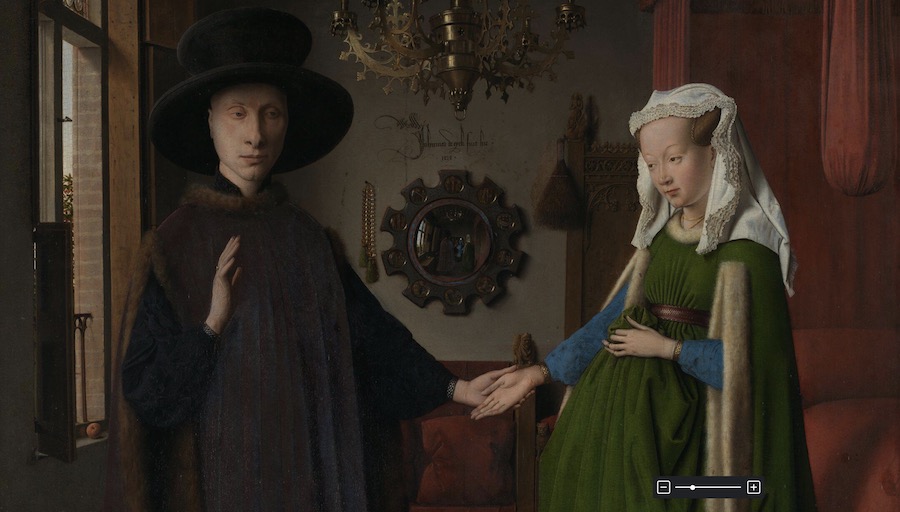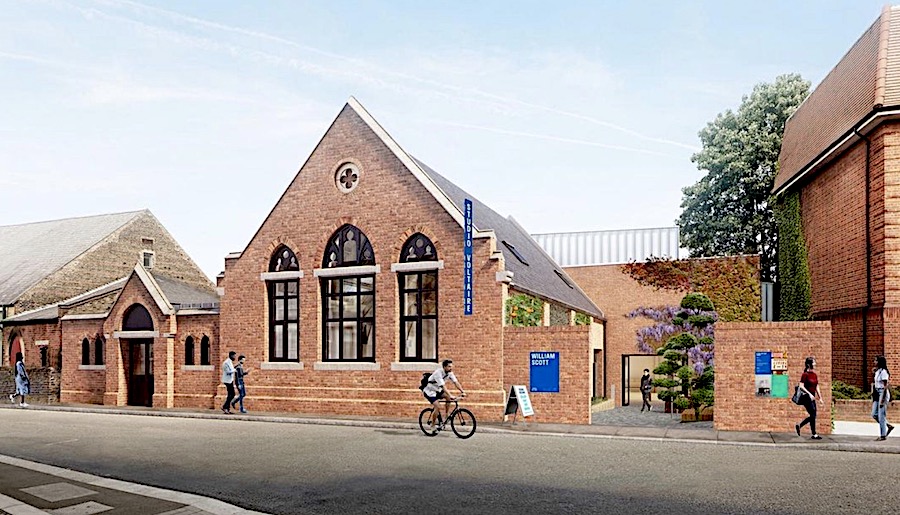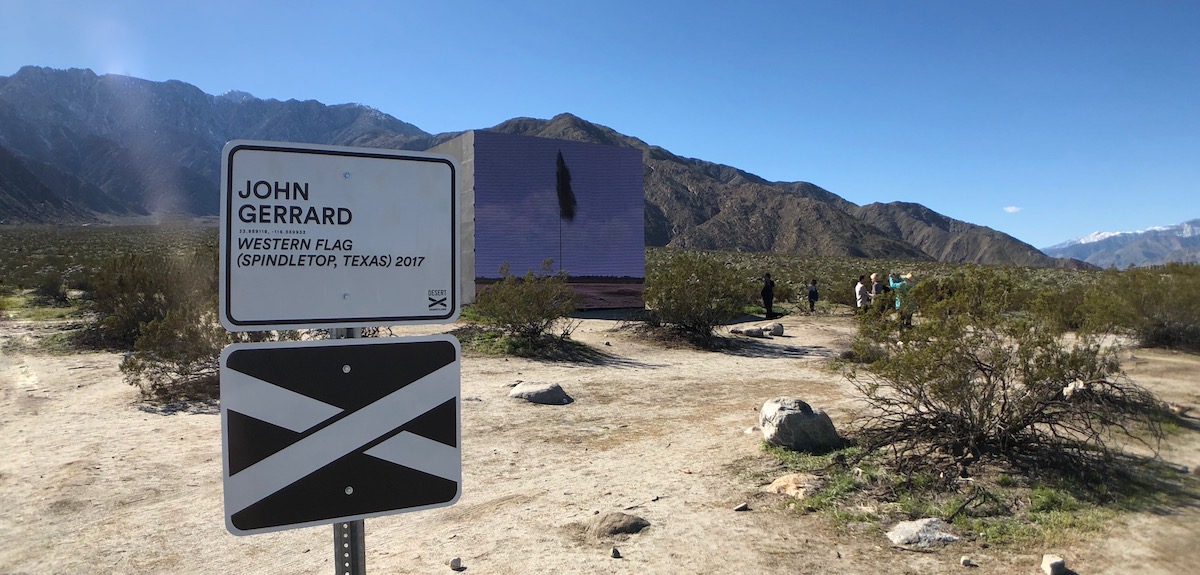The Desert X Board in consultation with its team and members of the Coachella Valley community have decided that, In light of the urgent health crisis and surge in cases of COVID-19, the only responsible way forward to protect the community, health care system, Desert X artists, visitors and all those who volunteer and contribute to the exhibition, is to wait until the lockdown period has been lifted before opening to the public.
The artists’ projects are ready, and the Desert X team and board will identify a new opening date as soon as they believe it can be done safely.
There has also been resistance from the local council to sponsor an artist this year. This was brought about by DESERT X holding a sister exhibition in Saudi Arabia in 2020. It has been noted that because of numerous human rights breaches in Saudi Arabia; the council has distanced itself from the Desert X team.

The National Gallery’s Top 20 Online Paintings
London’s National Gallery has remained open online, popular with the nation’s increasing interest in viewing great art on the web. Through digital initiatives, the NG are open 24/7, providing everyone with access to great art anytime, anywhere in the world. These programmes explore how people can look at and respond to art from their homes, including investigating the collection online, creative workshops, art talks and films.
The National Gallery has realised visitors have accessed the collection virtually in larger numbers than expected. The most popular painting page, with the highest number of views, is van Eyck’s jewel-like The Arnolfini Portrait, followed by Holbein’s The Ambassadors and Van Gogh’s Sunflowers. Other visitor favourites include Turner, Leonardo, Velázquez, Titian, Constable, Botticelli, Monet, Caravaggio and Vermeer. The figures are based on the largest number of individual views of a page from 19 March 2020 when the Gallery first locked down, until today.
The selection takes audiences on a journey spanning over 450 years, from a merchant family’s home in 15th- century Bruges (The Arnolfini Portrait, 1434) to Monet’s garden in 19th century Giverny (The Water-Lily Pond, 1899). The 20 most viewed pictures are just a fraction of the masterpieces that form the Gallery’s collection of over 2,300 works.
There has been a rise in audience interaction with painting pages overall. These pages provide an in-depth look into the story behind each work with text descriptions and video content. They also allow the viewer to zoom in for a closer look – not unlike the experience of standing in front of a painting in the Gallery, leaning in to focus on a particular section or inspecting a specific element in greater detail. Whether revisiting beloved favourites or discovering these masterpieces for the first time, the painting pages help guide the viewer and provide new insight layers.
As institutions that engage with both the individual and the community, museums and galleries have an essential role to play in times of crisis. Whether online visitors seek out the thrilling rush of Turner’s Rain, Steam and Speed or the still, luminous interior of Vermeer’s A Young Woman standing at a Virginal, there is little doubt that art can provide solace and reassurance in a challenging historical moment.
Dr Gabriele Finaldi, Director of the National Gallery, says: ‘It reveals that Van Eyck’s Arnolfini Portrait and Holbein’s Ambassadors are the pictures most people have looked for online. Both are indoor scenes with very dressed up people, and I wonder whether they reflect our own experience of being enclosed in our homes during lockdown but yearning to go out and celebrate! Even with the Gallery doors closed, all our masterpieces are available online for everyone to enjoy: Search The Collection Here
The top 20 most viewed painting pages are:
1. The Arnolfini Portrait, 1434 – Jan van Eyck
2. The Ambassadors, 1533 – Hans Holbein the Younger
3. Sunflowers, 1888 – Vincent van Gogh
4. The Fighting Temeraire, 1839 – Joseph Mallord William Turner
5. The Virgin of the Rocks, about 1491/2-9 and 1506-8 – Leonardo da Vinci
6. Rain, Steam, and Speed, 1844 – Joseph Mallord William Turner
7. The Rokeby Venus, 1647-51- Diego Velázquez
8. Surprised!, 1891 – Henri Rosseau
9. Bacchus and Ariadne, 1520-3 – Titian
10. The Hay Wain, 1821 – John Constable
11. Venus and Mars, about 1485 – Sandro Botticelli
12. The Water-Lily Pond, 1899 – Claude Monet
13. Bathers at Asnières, 1884 – Georges Seurat
14. The Supper at Emmaus, 1601 – Michelangelo Merisi da Caravaggio
15. Marriage A-la-Mode: 1, The Marriage Settlement, about 1743 – William Hogarth
16. A Young Woman standing at a Virginal, about 1670-72 – Johannes Vermeer
17. An Experiment on a Bird in the Air Pump, 1768 – Joseph Wright’ of Derby’
18. Niccolò Mauruzi da Tolentino at the Battle of San Romano, probably about 1438-40 – Paolo Uccello
19. A Wheatfield, with Cypresses, 1889 – Vincent van Gogh
20. The Sultan Mehmet II, 1480 – Gentile Bellini

Studio Voltaire Set Autumn Date To Reopen
Studio Voltaire, one of London’s leading not–for–profit arts organisation, have announced that its permanent home in Clapham, south London, will reopen to the public in October 2021, following completion of a transformative £2.8 million capital project designed by architects Matheson Whiteley.
Studio Voltaire opens with the first solo exhibition of William Scott (b.1964, San Francisco) outside of the USA – the first significant survey of his 30–year practice. While deeply rooted in personal history, Scott’s paintings address more comprehensive questions of citizenship, community and cultural memory. His portraits, predominantly of black figures, encompass African American political leaders, celebrities and pop icons and document members of his church, family, and residents of his native San Francisco. At large, Scott’s practice reimagines the social topography of this rapidly gentrified city in works that combine architectural design with science fiction. Instead, Scott’s paintings propose new utopian buildings, neighbourhoods, and civic agencies that together describe his compelling desire for a more equitable society. Studio Voltaire is partnering with Creative Growth Art Center, a noted nonprofit serving artist with disabilities based in Oakland, California, to present this exhibition. Scott has practised at Creative Growth since 1992. Further details about the exhibition will be announced in the coming months.
Studio Voltaire has also commissioned artists Anthea Hamilton and Joanne Tatham & Tom O’Sullivan to create a series of permanent installations for the building, providing playful, unexpected, and inspiring encounters artworks embedded within and throughout the organisation.
Internationally renowned artist Anthea Hamilton (b. 1978, London), a long–term resident of the local area and previously a studio holder at Studio Voltaire, will create an artist’s garden for the site first-ever permanent work. This ambitious project, both an artwork and a garden, will form a new, welcoming public entrance to Studio Voltaire. Hamilton has responded to the Victorian chapel gallery’s architecture and references walled kitchen gardens, the bold geometry of 1970s design, handcrafted folk art and vernacular architecture. Hamilton is interested in how the garden will be used and traversed by visitors, creating informal seating areas and a stagelike platform alongside a new pedestrian entrance, which will further open up the site and better connect the organisation to its surrounding neighbourhood.
Joanne Tatham and Tom O’Sullivan (b. 1971/1967, West Yorkshire/ Norfolk) have been commissioned to produce an installation across Studio Voltaire’s public toilets. The Institute For The Magical Effect Of Actually Giving A Shit (a note to our future self) is the artists’ first-ever permanent commission. It includes bespoke, hand-glazed ceramic tiles drawn from Tatham and O’Sullivan’s key motifs, in particular staring, cartoon-like faces. Positioning their work within the context of a public toilet, the artists’ vibrantly coloured installation employs humour and the absurdity of the unexpected as a strategy for both disruption and generosity.
Studio Voltaire’s celebrated art and design shop, House of Voltaire, will have its first permanent home on the site; and ActionSpace, a leading organisation supporting artists with learning disabilities, will increase onsite studio provision workspace.
The capital project, the most ambitious transition in Studio Voltaire’s 26–year history, will significantly increase the amount and quality of support the organisation can offer to artists and transform how visitors experience their buildings and programmes will become more welcoming, porous and engaging.
The scheme will create 42% more artists’ studios providing affordable, high–quality spaces to 75 artists and directly address the current citywide shortage of artists’ workspace. Public spaces will increase by 233%, including creating a dedicated learning and events space, public garden, café, artists’ kitchen, sculpture workshop, and two onsite live/workspaces to house international residency programmes for the first time.
The project has received £1.2 million of public funding via significant grants from the Mayor of London, Arts Council England – including transformative support from Cultural Capital Kickstart Fund – and Stride, backed by the London Boroughs Lambeth, Lewisham, Southwark and Wandsworth. Further support has been raised from individual donors, sales of works donated by artists and grants from trusts and foundations. A full list of The Studio Voltaire Capital Project’s funders can be found on Studio Voltaire’s website.
London–based architects Matheson Whiteley leads the project. Their past projects include Stuart Shave/Modern Art, London and Künstlerhaus Stuttgart, Germany, and artists’ studios for Ryan Gander, David Noonan and Goshka Macuga. This is their first public project in the UK. The project is built by Work Ltd who specialise in the innovative use of Building Information Modelling to deliver sustainable and innovative construction methods for cultural and Gallery buildings.
Top Photo: P C Robinson © Artlyst 2021

